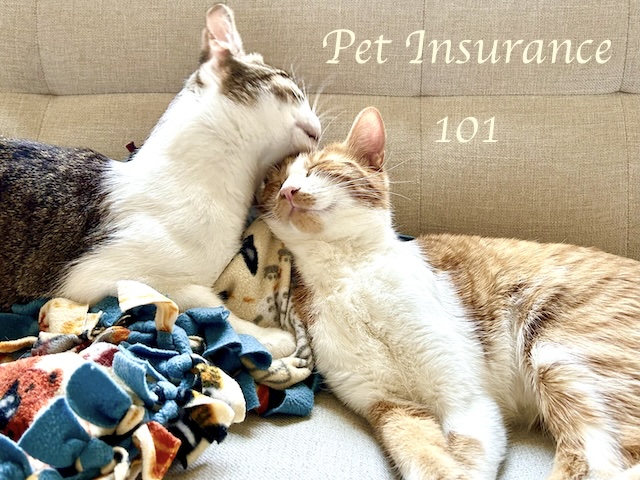Americans love their pets. For many, they’re part of the family. Pet ownership has increased dramatically over the past 30 years. The American Pet Products Association reports that as of 2018, 68% of U.S. households (84.6 million households) owned a pet, up from 56% in 1988. It’s no surprise, then, that more and more consumers are interested in purchasing pet insurance. The Insurance Information Institute notes that pet health insurance saw record growth in 2017, with gross premiums reaching $1.2 billion, a 23% increase from 2016. As an independent agent, this is definitely a worthwhile type of coverage to offer. But success depends on first understanding the demographics of pet insurance customers and their motivations.
Who buys pet insurance?
The first generation to adopt pets is the millennial generation. While they are less likely than previous generations to be homeowners, car owners, or parents, they are more likely to be pet owners. Besides the inherent joy of pet ownership, many millennials particularly enjoy pets because they provide companionship and can serve as a child replacement. Therefore, in terms of age, this is the primary demographic you want to target. Regarding gender, Bhattarai adds that millennial men are more likely than women to seek companionship from pets. In this age group, approximately 71% of men own dogs, compared to 62% of women, and 48% of men own cats, compared to 35% of women. Freelance writer and editor Heather Struch provided more detail on pet insurance consumers for Reuters, revealing that the majority of pet insurance buyers are single and childless. However, she added that empty-nesters whose children have recently left home also make up a significant portion of pet insurance buyers. In other words, those purchasing pet insurance are devoted pet owners who deeply care about the well-being of their animals and who are not currently raising children.
Why should they buy it?
There are two main reasons for the growth of the pet insurance market. One is that people are more committed to their pets’ care than in the past. “There’s been a dynamic shift in people’s thinking from 10 to 15 years ago to today,” Dr. Jack Stephens, veterinarian and founder of Pets Best Insurance, told Animal Wellness Magazine. “Animals are no longer considered disposable; they’re more like children, and people will do more to keep them healthy.” Dr. Stanley Coren, author of “The Intelligence of Dogs,” even told Psychology Today that some people actually care more for their dogs than for other people. Therefore, it’s easy to see why many people are willing to spend more on their pets to ensure their health. Another reason is the rising medical costs associated with veterinary care. Just like human medical expenses, treating pet illnesses and diseases is becoming increasingly expensive. The American Pet Products Association found that in just one year, the cost of veterinary care increased from $17.07 billion in 2017 to an estimated $18.26 billion in 2018. The DocShop team says the average cost for dogs is $227 per year, and for cats, $90. Even smaller pets like hamsters and rabbits come with a price tag, typically ranging from $30 to $90 per year. According to the team at Value Penguin, the most common conditions for dogs are ear infections ($149 per visit), allergies ($235 per visit), and skin infections ($175). For cats, these expenses are urinary tract conditions ($295), stomach upset ($385), and kidney failure ($485 per visit). Of course, if a pet is injured or develops a serious illness like cancer, these costs can quickly soar. In fact, chemotherapy alone can cost as much as $10,000. Purchasing pet insurance offers consumers a way to offset the many expenses that come with owning a pet. Kerry Sutherland of SheKnows says insurance provides comfort, knowing your savings won’t be depleted if your pet requires emergency surgery. As the ASPCA team also points out, more robust plans go beyond traditional medical expenses to cover the costs of treating behavioral issues like anxiety and housebreaking, and even alternative therapies like acupuncture and rehabilitation therapy.
Current Trends
There’s a significant disparity between the number of dogs and cats insured. Research by Pet Insurance Quotes found that in 2016, there were 1.4 million dogs insured in the United States, compared to just 200,000 cats. Kerry Lengyel of Veterinarian’s Money Digest writes that average premiums in 2017 were $535 per year for dogs and $335 per year for cats. This means dog owners will be your primary focus, as they represent a larger market and command higher premiums.
Do buyers prefer urban, rural, or suburban areas?
Most experts agree that the majority of people who buy pet insurance live in large urban areas. This is because things tend to cost more in large cities, including animal care. “Veterinary expenses can impact the premiums you pay,” says the North American Pet Health Insurance Association. “Generally speaking, the cost of veterinary treatment and expenses is higher in urban centers than in rural areas, so premiums will reflect this.” This is evidenced by the fact that Manhattan is the most expensive city in the United States, according to Pet Insurance Quotes. Therefore, if pet owners anticipate higher costs, they are generally more inclined to purchase pet insurance to offset them.
Is the buyer a family or a single professional?
As Heather Struck previously noted for Reuters, many people who invest in pet insurance are either childless or empty nesters. Consequently, you’ll find more single professionals purchasing these policies than families. This makes sense, considering many people actually consider their pets to be children in some way. In fact, a full 44% of millennials consider their pets to be “starter children” who will prepare them for parenthood later in life, writes Alexander Whittaker, deputy news editor at InStyle. Twenty-one percent even say this was the main reason they became pet owners in the first place. Most people interested in pet insurance aren’t dealing with the myriad expenses of raising children, and therefore have more money to invest in their fur babies.
What does a typical buyer persona look like?
Let’s put it all together and construct a sample buyer persona. You’ll typically find that your average pet insurance customer is either a Millennial who hasn’t yet had children, or a Baby Boomer who has already raised a child who’s left home. They’re deeply concerned about their pet’s health and well-being and understand the costs associated with veterinary care. They want to know they’re financially capable of handling the rising costs that come with pet ownership. They also want to make critical decisions about their pet’s health without worrying about the financial impact. In terms of specific pet types, insurance covers everything from dogs and cats to birds, rabbits, hamsters, and even reptiles. However, dog owners are more likely to seek pet insurance than anyone else. They’re also likely to live in large cities, where pet healthcare and services are more accessible than in rural or suburban areas. While demographics will obviously vary, this should serve as a basic buyer persona so you know who to target.
Huge opportunity
Pet ownership is on the rise in the United States. Consequently, pet insurance is rapidly gaining popularity. Dr. Nancy Kay, a veterinarian at Pet Health Network, writes that people have incredibly strong connections with their pets, making pet insurance an integral part of responsible pet ownership. She adds that pet insurance is growing faster than many other insurance categories. Interestingly, however, Pet Insurance Quotes indicates that less than 1% of dogs and cats in the United States have insurance. This means that pet insurance is a bit of a diamond in the rough for independent agents. There are some significant opportunities out there – you just have to capitalize on them. By clearly understanding who you’re trying to reach and what motivates them, you can expand your client base and make pet insurance one of your primary insurance options.



